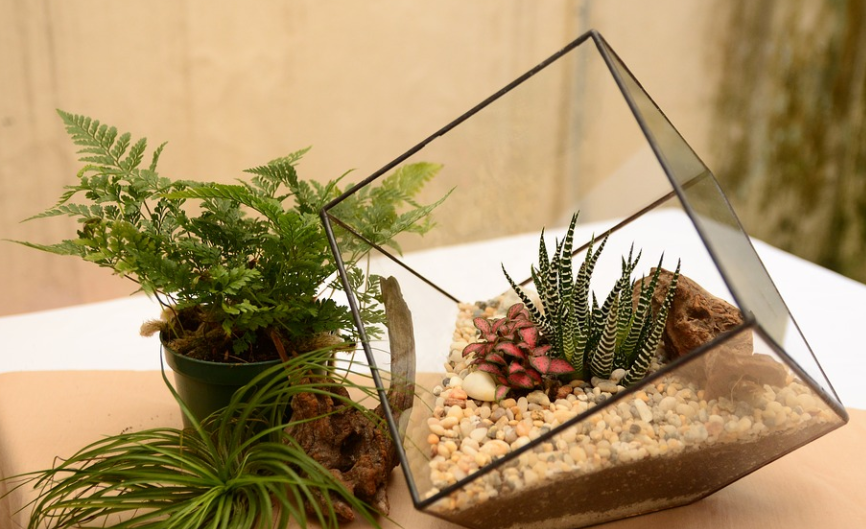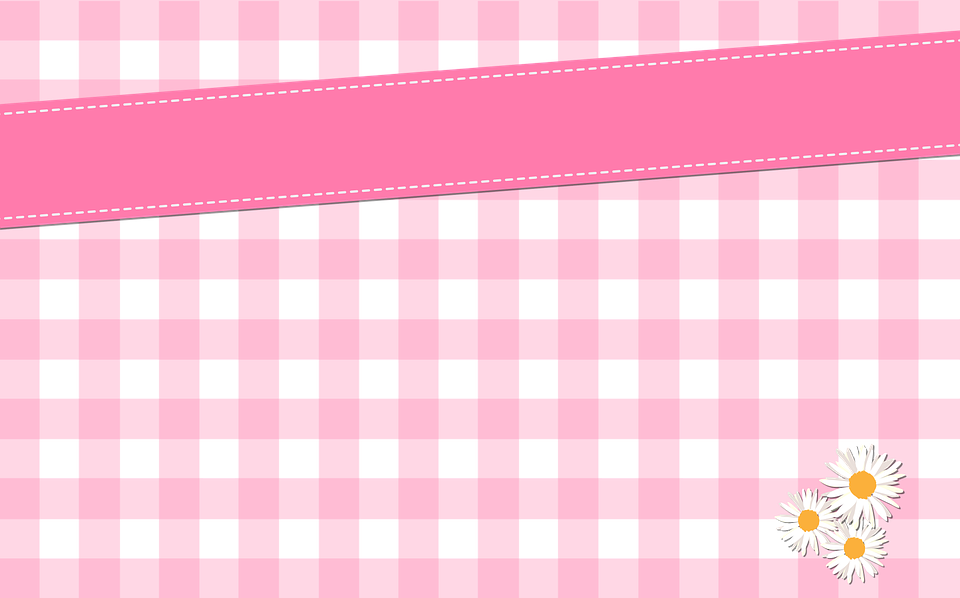A terrarium is a marvelous decorating item we can put anywhere, from our bedroom to the living room. It brings natural nuance to the house, and some designs even allow a terrarium to showcase its otherworldly atmosphere as if the world in it is one separate world.
A terrarium is also very easy to make. Terrarium media can be from used materials, which is good for recycling and green lifestyle, and the plants do not have to be exotic, rare, nor expensive. The art of a terrarium lies in the placing and structuring.
Before you decide to buy a terrarium, you should know this basic knowledge first so that you can improve your taste and end up having a unique terrarium.
Terrarium type based on the organisms
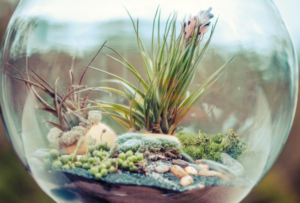 Some terrariums use plants only, and the other the combination of plants and insects, or other animals. Therefore, there are two types of terrarium: fauna and flora.
Some terrariums use plants only, and the other the combination of plants and insects, or other animals. Therefore, there are two types of terrarium: fauna and flora.
Terrariums are originally famous for snake and lizard owners, and their size used to be medium to large only. But the size can be smaller depending on what ecosystem the terrarium has.
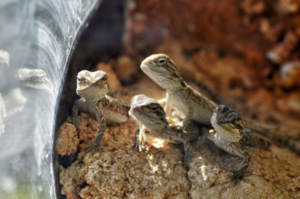 There is even a self-sustaining terrarium, the microfauna terrarium. It combines mold, fungus, microorganism, and insects to keep the ecosystem efficient. When it is efficient, your interference is not required for the organisms in the terrarium to survive.
There is even a self-sustaining terrarium, the microfauna terrarium. It combines mold, fungus, microorganism, and insects to keep the ecosystem efficient. When it is efficient, your interference is not required for the organisms in the terrarium to survive.
Terrarium based on the ecosystem
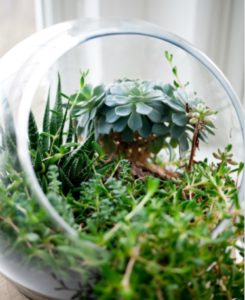 There are four well-known ecosystem-based terrariums: desert, terrestrial, tropical, and the one that has been hinted on the previous subheading, microfauna terrarium. Each has their features and requirements, which make them unique from one to another.
There are four well-known ecosystem-based terrariums: desert, terrestrial, tropical, and the one that has been hinted on the previous subheading, microfauna terrarium. Each has their features and requirements, which make them unique from one to another.
Desert terrarium uses desert elements: sands, cactus, succulents, rocks, and desert insects. Scorpions, snakes, or beetles suit this terrarium very well.
In a tropical terrarium, you will have moss, bonsai tree, spiderwort, starfish plant, and spider fern. Ants, worms, beetles, and spiders will look good on this terrarium.
Terrestrial terrarium imitates the look of rocky mountains and cliffs. The plant for this environment is from tillandsia genus.
A microfauna terrarium typically takes a tropical look, because it tends to look wet and humid. The fauna for this terrarium is a snail, isopods, nematodes, and protozoans.
Choosing the right one
To choose the right terrarium for you, you should consider the place where you are going to put it. For a living room, where light is most likely to be always on, a tropical terrarium with the wet environment will not be suitable. Microfauna also cannot stand light too much, because to them, even the light from the bulb is scorching enough.
A desert terrarium can be your option to be the living room decorative item. But having a fauna in it will be tricky. We suggest only the plant-based one.


